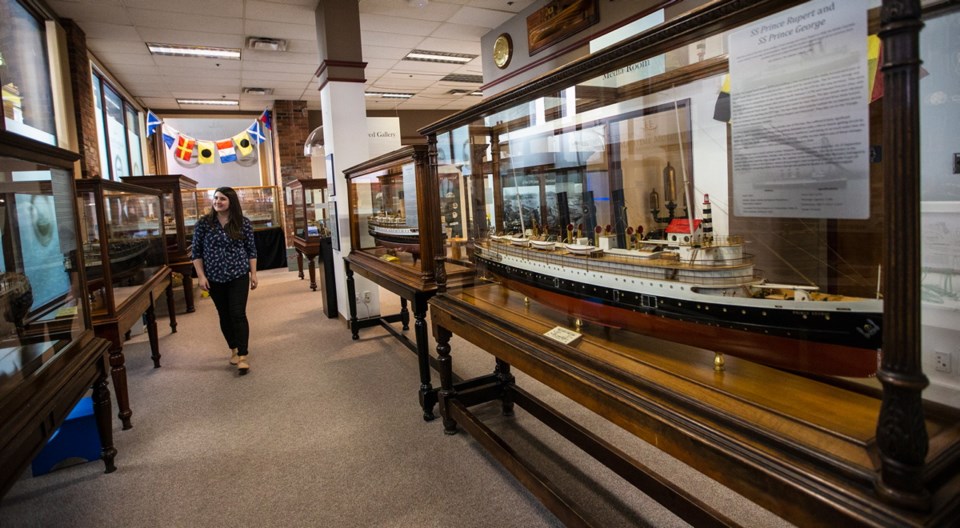Officials at the Maritime Museum of B.C. have set a course for the future, hoping to find a permanent waterfront home to showcase their collection by 2021 — the 150th anniversary of B.C. joining Confederation.
They have been searching for a suitable space for the museum since it had to move in 2015 from its home of 50 years in Bastion Square. That was because the 30,000-square-foot Bastion Square building, former site of B.C.’s first courthouse, gradually fell into disrepair and now needs an estimated $12-million refurbishment to be suitable for occupation.
“In a perfect world, it would be ideal if we could have a purpose-built location, something which had more of a national focus but then also served the interests of everyone here in British Columbia,” said David Leverton, the museum’s executive director.
Leverton said the museum will seek funding from the provincial and federal governments — which would be the chief source of capital for a new building.
“To do something of this scale, it would have to be under either a revised, a new provincial funding model or, if it’s national in scope, then it would have to be under a new national funding model.”
After leaving Bastion Square, the museum found accommodation in much-smaller quarters in Nootka Court on Humboldt Street. The museum now has less than 3,000 square feet, and most of its 35,000-artifact collection is in climate-controlled storage supplied by the province.
The collection includes First Nations history and 10,000 years of marine heritage.
Having a national focus would mean displaying items from other parts of the country, he said.
“The reality is right now that when you look across Canada, the national museum property that we have the furthest west is Winnipeg,” he said, referring to the Canadian Museum for Human Rights.
A building with a provincial emphasis would likely be 20,000 to 30,000 square feet, while one with a national focus could be double that. Cost would be in the tens of millions of dollars.
Leverton said he would like to share the maritime spotlight with East Coast facilities such as the Canadian Museum of Immigration at Pier 21 and the Maritime Museum of the Atlantic.
“Clearly, we have a tremendous history across Canada as it relates to our maritime heritage. … We’ve got an amazing story to tell here on the West Coast and we just want to make sure that is celebrated and commemorated.”
He said it would be a great thing for the province “to all of a sudden be welcomed into the national museum family.”
Leverton said several potential museum sites have been looked at.
Any site decision would require provincial government input, and also federal input if there is a national aspect, Leverton said.
Victoria Mayor Lisa Helps said she supports the idea of a purpose-built facility and would like to see it happen at the Inner Harbour.
“They’ve got a great collection and I think what we’d love to see is a world-class facility here in the capital city to display the exhibits that they have.”
Despite the small space where the museum is now, “they’ve been creating travelling exhibitions, creating more opportunities for public engagement and school kids,” she said.
Creating a museum building will require “political will,” said museum president Don Prittie, adding that it could be something like the well-rounded effort to put an arts centre in the museum’s former home at Bastion Square.
Asked about a return to Bastion Square, if it is revamped, Leverton said the objective is to make a move to a spot along the ocean.
“We have a long history with the building but clearly we would like to be on the water,” he said.
“We’re a maritime museum, we have several vessels in our collection.”



